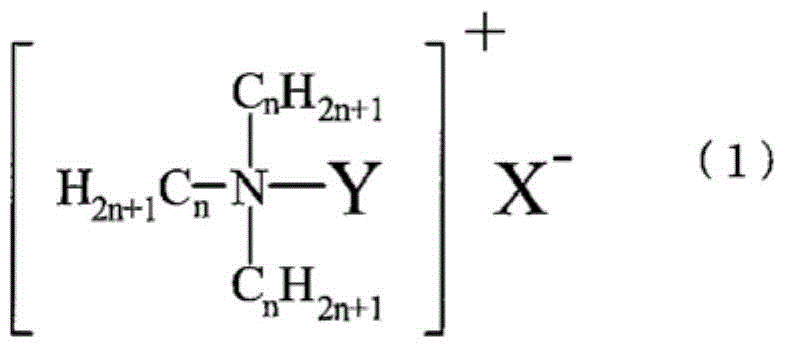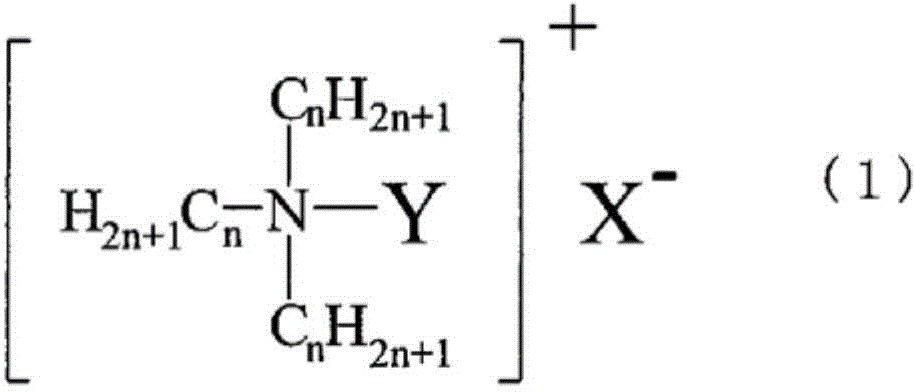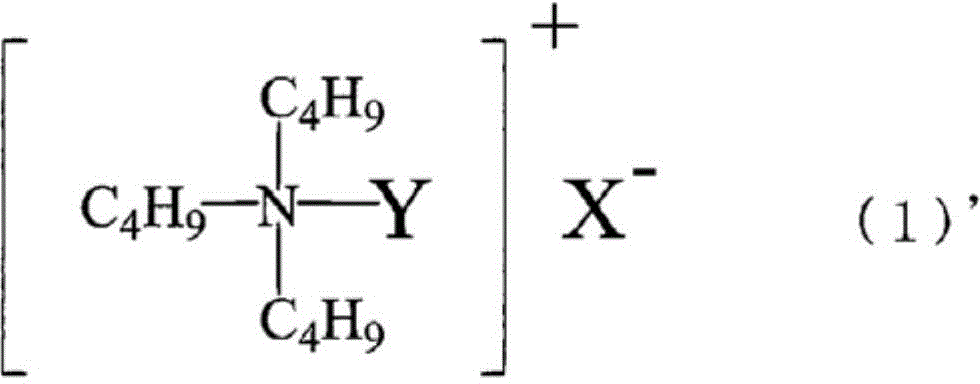Method for producing polyarylate
A manufacturing method and technology of polyarylate, which is applied in the field of polyarylate manufacturing, can solve the problems such as unrecorded mixer, unrecorded polyarylate manufacturing method, etc., and achieve the effects of increased strength and high utilization value
- Summary
- Abstract
- Description
- Claims
- Application Information
AI Technical Summary
Problems solved by technology
Method used
Image
Examples
Embodiment 1
[0057] In the tank-type reaction vessel, as a stirrer, a reciprocating rotary stirrer AJITER (registered trademark of Shimazaki Seisakusho Co., Ltd.) was equipped with triangular blades. Among them, 49 g (0.21 moles) of 2,2-bis(4-hydroxyphenyl) propane (hereinafter, abbreviated as BPA) as a dihydric phenol, and 49 g (0.21 mol) of p-tert-butylphenol (hereinafter, abbreviated as BPA) as a terminal terminator Denoted as PTBP.) 0.63 g (0.0042 mol), 1 mol % (0.67 g) of tri-n-butylbenzyl ammonium chloride (hereinafter, abbreviated as TBBAC) as a polymerization catalyst relative to all dihydric phenols was dissolved In 730ml of 3w / w% sodium hydroxide aqueous solution (water phase). Separately, 44 g (0.22 mol) of a mixture of terephthaloyl dichloride / isophthaloyl dichloride = 1 / 1 (hereinafter, abbreviated as MPC) was dissolved in 530 ml of dichloromethane (organic phase).
[0058] Adjust the stirring power of the mixer to 7kW / m 3 The organic phase was added to the aqueous phase unde...
Embodiment 2
[0060] In Example 1, instead of BPA as the dihydric phenol, 55 g (0.21 moles) of 2,2-bis(4-hydroxy-3-methylphenyl)propane (hereinafter abbreviated as BPC) was used. The same operation as in Example 1 was carried out to obtain a polyarylate resin.
Embodiment 3
[0062] In Example 1, 57.5 g (0.21 moles) of 1,1-bis(4-hydroxyphenyl)cyclohexane (hereinafter abbreviated as BPZ) was used instead of BPA as a dihydric phenol, and PTBP as a terminal terminator was used. Except having changed it into 0.51 g (0.0034 mol), it carried out similarly to Example 1, and obtained the polyarylate resin.
PUM
 Login to View More
Login to View More Abstract
Description
Claims
Application Information
 Login to View More
Login to View More - Generate Ideas
- Intellectual Property
- Life Sciences
- Materials
- Tech Scout
- Unparalleled Data Quality
- Higher Quality Content
- 60% Fewer Hallucinations
Browse by: Latest US Patents, China's latest patents, Technical Efficacy Thesaurus, Application Domain, Technology Topic, Popular Technical Reports.
© 2025 PatSnap. All rights reserved.Legal|Privacy policy|Modern Slavery Act Transparency Statement|Sitemap|About US| Contact US: help@patsnap.com



